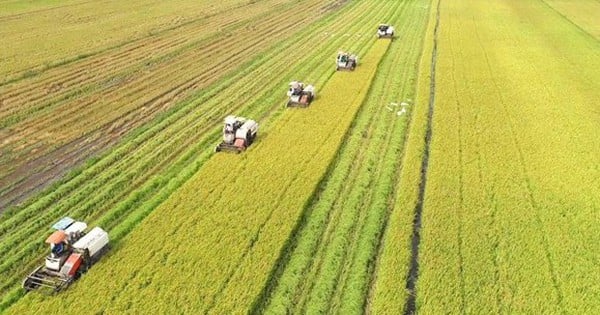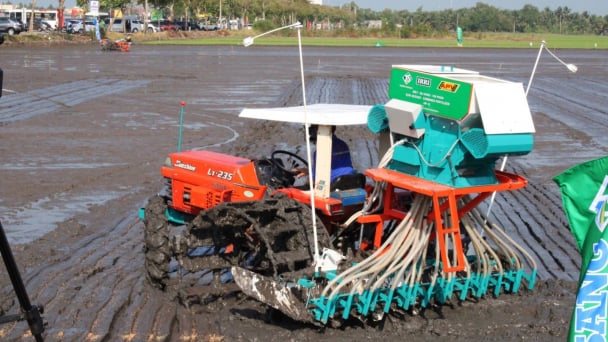May 19, 2025 | 23:37 GMT +7
May 19, 2025 | 23:37 GMT +7
Hotline: 0913.378.918
May 19, 2025 | 23:37 GMT +7
Hotline: 0913.378.918

The Cape honeybee worker has been shown to clone itself millions of times. (Image credit: Shutterstock)
When hives of the African lowland honeybee (Apis mellifera scutella) collapse, they do so because of an invisible inner threat: the growing, immortal clone army of a rival bee subspecies.
That army is possible because the female workers of the rival subspecies — the South African Cape honeybee (Apis mellifera capensis) — can create perfect copies of themselves, with one individual found to have done so millions of times in the past three decades. With this perpetual-cloning ability, the Cape honeybees sneak into the hives of their lowland honeybee rivals and churn out copy after copy (no need for a queen). Even worse, these clones are freeloaders, refusing to do any work.
Now, a new study has revealed the genetic foundations of the strange and formidable adaptation. Unlike most animals, and even their own queen, the female workers do not reshuffle the DNA of the eggs they lay. This enables the workers to consistently recreate a perfect copy of themselves — a clone — each time they reproduce. According to the researchers, the sidestepping of this DNA-reshuffling process is unlike anything they've ever seen.
"It's incredible. It's also incredibly dysfunctional," lead author Benjamin Oldroyd, a professor of behavioral genetics at the University of Sydney, told Live Science, referring to the fact that reshuffling is normally required to hold chromosomes together during the egg-making process. "Yet, somehow they've managed to do it [still lay eggs]. It's insane; I've not heard of anything like this before, anywhere."
Honeybee workers and other social insects have the ability to reproduce via a form of asexual reproduction called thelytokous parthenogenesis, in which females produce female offspring from unfertilized eggs. Each time she creates offspring, the single-parent worker bee will replicate the chromosomes she received from her parents (a queen and a male drone) into four. Next, she takes the genetic material from all four chromosomes, reshuffles it and creates four chromosomes with that mixed-up DNA through a process called recombination. This reshuffling guarantees that, even with just one parent, future offspring will be genetically distinct.
However, as only two chromosomes out of the four are picked and no new genetic material is introduced by a sexual partner, this leads to an average loss of one-third of genetic diversity every time the shuffling is performed, or every generation, Oldroyd said. After just a few generations of parthenogenetic reproduction, the accumulated loss of genetic material leads to levels of genetic diversity that are low enough to be lethal.
Most social insects, therefore, rely on a queen that reproduces sexually on their behalf. In return, the genetically diverse workers maintain the health of the colony and protect the brood of their closely related siblings and cousins.
"It's like in a human society, we have this tension between what's good for the individual and what's good for society, and we come up with all of these social norms that allow us to function," Oldroyd said. "In honeybee societies, one of the things that evolved to suppress selfish behavior is [that] the workers generally can't lay eggs."
This is mostly true of the Cape honeybee, which on the whole abides by the usual rules of social insect reproduction, according to Oldroyd. But Cape honeybee workers have a genetic mutation that enables them to lay eggs parthenogenetically with all of the genetic material from the four chromosomes (so they don’t throw out any of those chromosomes somehow). With that ability, they can prevent the immediate loss of genetic diversity caused by the reshuffling process. This allows them to clone themselves whenever they like for decades, even if cloning in the much longer term leads to a population that, on the whole, has no genetic diversity.
This cloning superpower places colonies on a much finer balancing point between individualism and sociality. And if they tip over, they may be at risk of extinction, according to the researchers.
To understand how the clones can create millions of copies of themselves and yet remain functional, Oldroyd and his team compared the genomes of Cape honeybee workers with those of their queen and her offspring.
After forcing the Cape queen to reproduce asexually by fitting her with surgical tape that prevented her from mating, the team examined certain DNA sequences of both the Cape queen and the 25 larvae she produced. Then, they did the same for four Cape honeybee workers and their 63 larvae.
The team discovered that the asexually reproduced offspring of the queen had levels of recombination (DNA mixing) 100 times greater than the genetically identical cloned offspring of the workers — a finding that suggests the Cape worker bees have evolved a mutation that prevents recombination. Without the risk of a one-third loss of genetic material caused by the asexual reshuffling process, the workers are free to continually create perfect copies of themselves.
The workers’ ability to clone at will places their colonies in a much more precarious position, especially once the queen leaves or dies and the old social order collapses. Instead of expending energy to get the colony back on its feet, workers will dedicate themselves to selfish schemes — such as finding ways to place their clones into positions of power.
"If you take the queen away, for instance, instead of raising a new queen like other bee species might, these bees will just start laying eggs themselves," Oldroyd said. "There are also cells, called queen cells, where the queen lays the eggs containing future queens. It's perfectly possible for a worker to fly in from another colony, or one of the existing workers in that colony to come and replace that queen egg with one of their clone eggs. That way, they can be genetically reincarnated as a queen."
But one lineage of Cape bee workers has taken this socially parasitic behavior even further, to the point where they no longer need a queen, and they solely exist by taking over the hives of the African lowland honeybee. Members belonging to a single branch of rogue clone Cape bee workers sneak into African lowland honeybee hives, which are commonly used for agricultural purposes, and lay as many eggs as they can, which the African lowland bees mistake for their own and rear.
The parasitic clone Cape bee larvae are in on this ruse, even sending signals to their unfortunate hosts to feed them as much as possible. This cuckoo-like behavior allows them to grow their bodies and their ovaries almost to the size of a queen's.
"The Cape bee clones don't do any work inside those hives because they've become reproductive," Oldroyd said. "They just strut around with this attitude like, 'Yeah, you're going to work for me.' It very quickly leads to the collapse of the hive. As individuals, these clones are quite dysfunctional, so you'd expect them to peter out. But they're a lot like the cells in a tumor in this regard — it doesn't matter if every clone is healthy, so long as enough of them are around to exploit the host."
The Cape bee workers that take part in this parasitic behavior are the genetically identical descendants of a single worker that lived in 1990, according to Oldroyd. This single lineage of clones is responsible for the collapse of 10% of African lowland honeybee colonies every year.
Now that the researchers have a handle on how the workers can accomplish their bizarre cloning trick, they want to figure out how queens can switch on the gene that enables recombination and how the workers can switch it off. They also want to investigate the African lowland hives parasitized by Cape bee workers, to figure out what triggers the hive collapse.
The researchers published their findings June 9 in the journal Proceedings of the Royal Society B.
(Live Science)

(VAN) This was the assessment shared by experts at the workshop titled 'Assessing the Role and Potential of Low-Emission Rice Production Systems in Vietnam,' held on the morning of May 19.

(VAN) Cai Rong Port is the fisheries control center of Quang Ninh, helping to monitor fishing vessels, combat IUU fishing, and remove the EC's 'yellow card'.

(VAN) The German Agricultural Society (DLG) explores the possibility of establishing a mechanization service center in Vietnam’s Mekong Delta to support farmers in accessing and utilizing advanced machinery.

(VAN) On May 16, the Department of Water Resources Management, in collaboration with the Food and Agriculture Organization of the United Nations (FAO), held a signing ceremony for the GEF-8 project document.

(VAN) Food safety, mechanization, vocational training, and market opening are key areas of cooperation expected between the Vietnamese Government and the Federal Republic of Germany.

(VAN) Deputy Minister Nguyen Quoc Tri also expressed his hope that Cuba will soon overcome its current challenges, attain food security, and further expand cooperation with Vietnam.

(VAN) The project contributes to enhancing the resilience of communities vulnerable to the impacts of climate change, with a primary focus on local women.